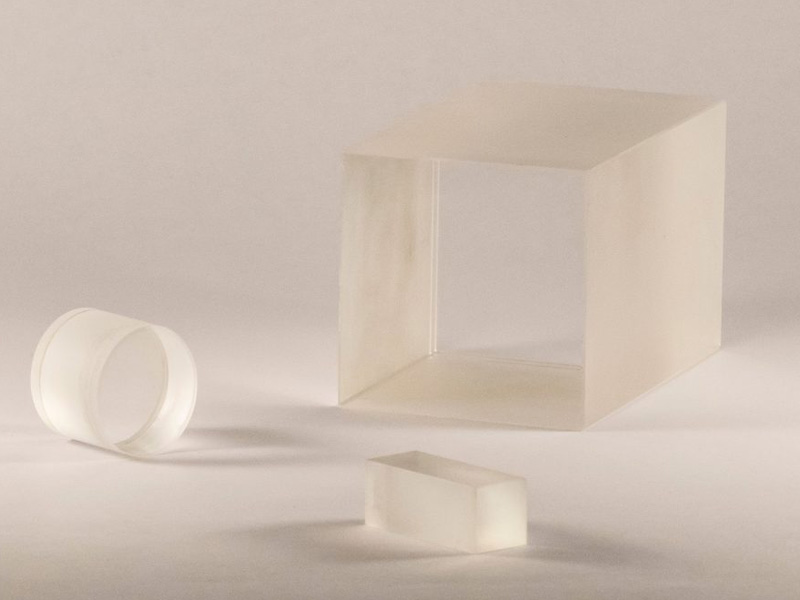- Potassium Dihydrogen Phosphate (KDP) and Potassium Dideuterium Phosphate (KD*P ) are among the most widely-used commercial NLO materials, characterized by good UV transmission, high damage threshold, ..

NLO Crystals
KD*P/KDP Crystals
Description
Potassium Dihydrogen Phosphate (KDP) and Potassium Dideuterium Phosphate (KD*P ) are among the most widely-used commercial NLO materials, characterized by good UV transmission, high damage threshold, and high birefringence, though their NLO coefficients are relatively low. They are usually used for doubling, tripling and quadrupling of a Nd:YAG laser at the room temperature. In addition, they are also excellent electro-optic crystals with high electro-optic coefficients, widely used as electro-optical modulators, such as Q-switches, Pockels Cells, etc.
Notes: Because their polished surface easier moistens, however, the user is advised to provide a dry condition (<50%) and the sealed housing for preservation.
Physical and Optical Properties
| KDP | KD*P | |
| Chemical Formula | KH 2 PO 4 | KD 2 PO 4 |
| Transparency Range | 200-1500nm | 200-1600nm |
| Nonlinear Coefficients | d 36 =0.44pm/V | d 36 =0.40pm/V |
| Refractive Index (at 1064nm) | n o =1.4938, n e =1.4599 | N o =1.4948, n e =1.4554 |
| Electro-Optical Coefficients | r 41 =8.8pm/V r 63 =10.3pm/V |
r 41 =8.8pm/V r 63 =25pm/V |
| Longitudinal Half-Wave Voltage: | V ∏=7.65KV( λ=546nm) | V ∏=2.98KV(?λ =546nm) |
| Absorptance: | 0.07/cm | 0.006/cm |
| Optical Damage Threshold: | >5 GW/cm 2 | >3 GW/cm 2 |
| Extinction Ratio: | 30dB | 30dB |
| Sellmeier Equations of KDP: | ||
| n o 2 = 2.259276 + 0.01008956/(λ2 - 0.012942625) + 13.005522 λ2 /( λ2 - 400) n e 2 = 2.132668 + 0.008637494/(λ2 - 0.012281043) + 3.2279924λ2 /( λ2 - 400) |
||
| Sellmeier Equations of DKDP | ||
| n o 2 = 1.9575544 + 0.2901391λ2/( λ2- 0.0281399) - 0.02824391?λ2 +0.004977826λ4 n e 2 = 1.5005779 + 0.6276034λ2/( λ2 - 0.0131558) - 0.01054063?λ2 +0.002243821λ4 |
||